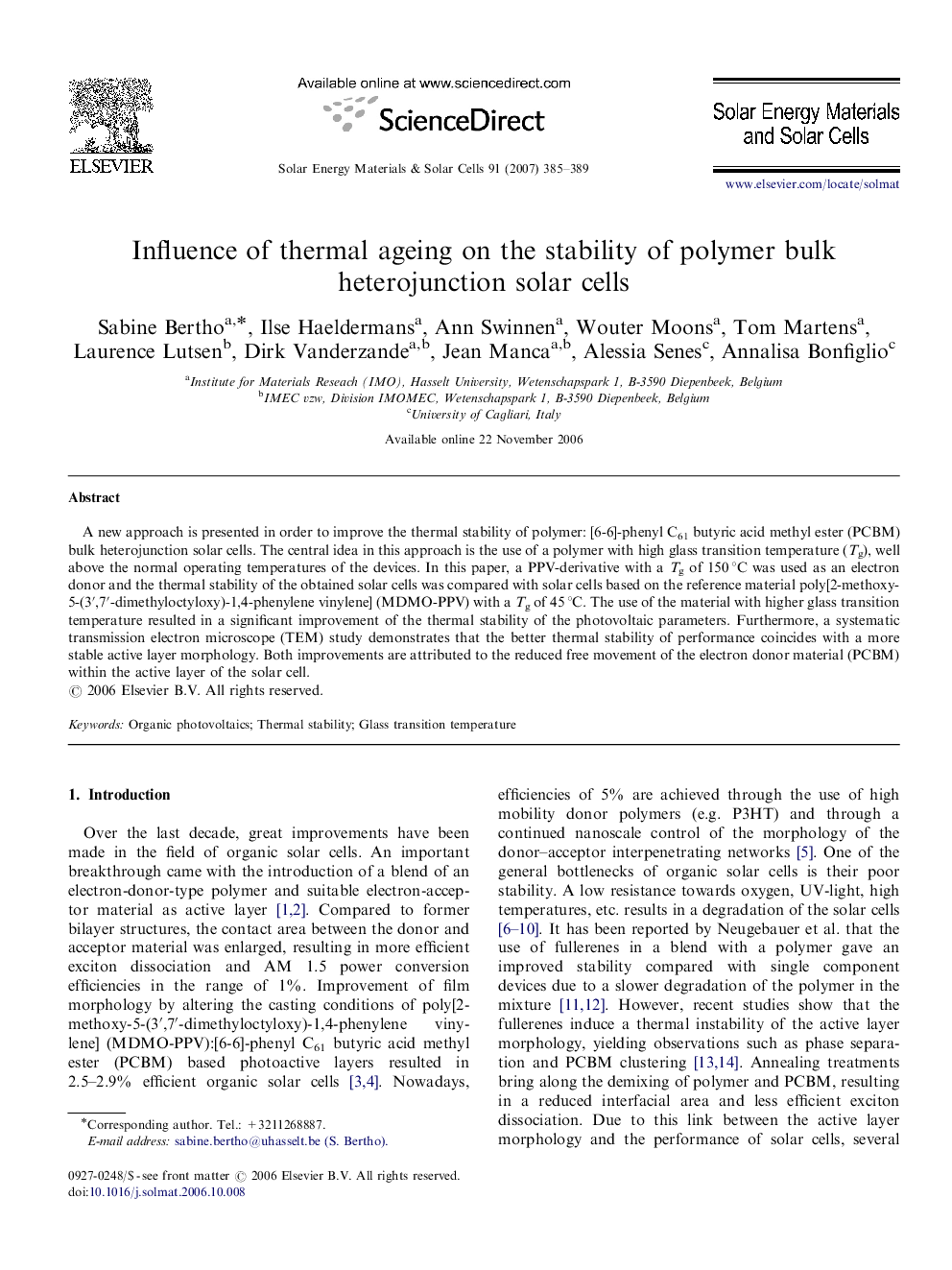| Article ID | Journal | Published Year | Pages | File Type |
|---|---|---|---|---|
| 80602 | Solar Energy Materials and Solar Cells | 2007 | 5 Pages |
A new approach is presented in order to improve the thermal stability of polymer: [6-6]-phenyl C61 butyric acid methyl ester (PCBM) bulk heterojunction solar cells. The central idea in this approach is the use of a polymer with high glass transition temperature (Tg), well above the normal operating temperatures of the devices. In this paper, a PPV-derivative with a Tg of 150 °C was used as an electron donor and the thermal stability of the obtained solar cells was compared with solar cells based on the reference material poly[2-methoxy-5-(3′,7′-dimethyloctyloxy)-1,4-phenylene vinylene] (MDMO-PPV) with a Tg of 45 °C. The use of the material with higher glass transition temperature resulted in a significant improvement of the thermal stability of the photovoltaic parameters. Furthermore, a systematic transmission electron microscope (TEM) study demonstrates that the better thermal stability of performance coincides with a more stable active layer morphology. Both improvements are attributed to the reduced free movement of the electron donor material (PCBM) within the active layer of the solar cell.
